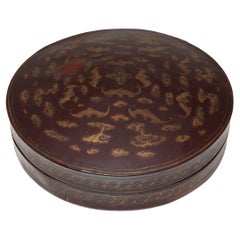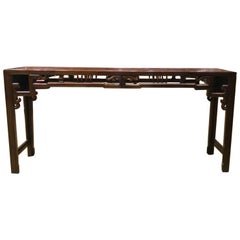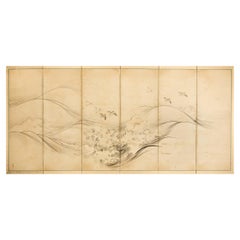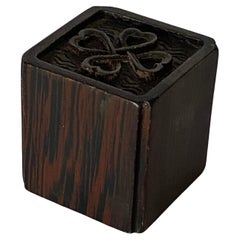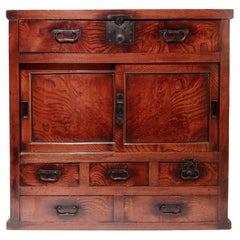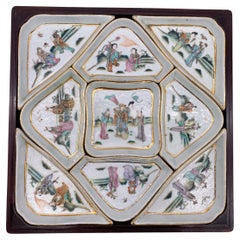Late 19th Century Asian Art and Furniture
Chinese Qing Antique Late 19th Century Asian Art and Furniture
Hide, Fabric, Wood
Chinese Chinese Export Antique Late 19th Century Asian Art and Furniture
Elm
Japanese Antique Late 19th Century Asian Art and Furniture
Silk, Wood, Paper
Vietnamese Chinese Export Antique Late 19th Century Asian Art and Furniture
Metal
Japanese Meiji Antique Late 19th Century Asian Art and Furniture
Hardwood
Chinese Qing Antique Late 19th Century Asian Art and Furniture
Porcelain
Japanese Meiji Antique Late 19th Century Asian Art and Furniture
Enamel
Chinese Qing Antique Late 19th Century Asian Art and Furniture
Agate
Chinese Antique Late 19th Century Asian Art and Furniture
Bronze
Japanese Antique Late 19th Century Asian Art and Furniture
Silver
Indian Anglo Raj Antique Late 19th Century Asian Art and Furniture
Wood
Japanese Meiji Antique Late 19th Century Asian Art and Furniture
Lacquer
Japanese Meiji Antique Late 19th Century Asian Art and Furniture
Gold Leaf
Chinese Other Antique Late 19th Century Asian Art and Furniture
Terracotta
Chinese Chinese Export Antique Late 19th Century Asian Art and Furniture
Porcelain
Asian Moorish Antique Late 19th Century Asian Art and Furniture
Brass
Chinese Qing Antique Late 19th Century Asian Art and Furniture
Iron
Chinese Chinoiserie Antique Late 19th Century Asian Art and Furniture
Wool
Turkish Islamic Antique Late 19th Century Asian Art and Furniture
Leather
Chinese Qing Antique Late 19th Century Asian Art and Furniture
Wood
Korean Other Antique Late 19th Century Asian Art and Furniture
Brass
Tibetan Antique Late 19th Century Asian Art and Furniture
Pine, Paint
Chinese Chinoiserie Antique Late 19th Century Asian Art and Furniture
Silk
Antique Late 19th Century Asian Art and Furniture
Wood
Thai Neoclassical Antique Late 19th Century Asian Art and Furniture
Gold Leaf, Metal
Chinese Ming Antique Late 19th Century Asian Art and Furniture
Brass
Indian Anglo-Indian Antique Late 19th Century Asian Art and Furniture
Hardwood
Chinese Chinese Export Antique Late 19th Century Asian Art and Furniture
Porcelain
Korean Other Antique Late 19th Century Asian Art and Furniture
Porcelain
Japanese Meiji Antique Late 19th Century Asian Art and Furniture
Copper, Enamel
Chinese Chinese Export Antique Late 19th Century Asian Art and Furniture
Stone
Japanese Japonisme Antique Late 19th Century Asian Art and Furniture
Silk
Chinese Chinese Export Antique Late 19th Century Asian Art and Furniture
Porcelain
Chinese Chinoiserie Antique Late 19th Century Asian Art and Furniture
Wood
Chinese Chinese Export Antique Late 19th Century Asian Art and Furniture
Silver
French Louis XVI Antique Late 19th Century Asian Art and Furniture
Bronze
Unknown Chinese Export Antique Late 19th Century Asian Art and Furniture
Hardwood
Chinese Art Nouveau Antique Late 19th Century Asian Art and Furniture
Wood
Japanese Meiji Antique Late 19th Century Asian Art and Furniture
Bronze
African Antique Late 19th Century Asian Art and Furniture
Mother-of-Pearl
Chinese Ming Antique Late 19th Century Asian Art and Furniture
Wood
Japanese Meiji Antique Late 19th Century Asian Art and Furniture
Gold Leaf
Japanese Meiji Antique Late 19th Century Asian Art and Furniture
Bronze
Chinese Qing Antique Late 19th Century Asian Art and Furniture
Brass
Japanese Antique Late 19th Century Asian Art and Furniture
Copper, Enamel
Japanese Meiji Antique Late 19th Century Asian Art and Furniture
Enamel, Copper
Indian Antique Late 19th Century Asian Art and Furniture
Hardwood
Korean Other Antique Late 19th Century Asian Art and Furniture
Silk, Acrylic, Wood
Japanese Meiji Antique Late 19th Century Asian Art and Furniture
Ceramic
Japanese Antique Late 19th Century Asian Art and Furniture
Paper
Chinese Chinese Export Antique Late 19th Century Asian Art and Furniture
Wood
English Chinoiserie Antique Late 19th Century Asian Art and Furniture
Metal
Japanese Edo Antique Late 19th Century Asian Art and Furniture
Pottery
Japanese Meiji Antique Late 19th Century Asian Art and Furniture
Bronze
Nepalese Tribal Antique Late 19th Century Asian Art and Furniture
Iron
Japanese Meiji Antique Late 19th Century Asian Art and Furniture
Bronze
Japanese Antique Late 19th Century Asian Art and Furniture
Porcelain
Omani Moorish Antique Late 19th Century Asian Art and Furniture
Brass, Copper
Japanese Meiji Antique Late 19th Century Asian Art and Furniture
Gold
Japonisme Antique Late 19th Century Asian Art and Furniture
Ceramic
Read More
Symbols of Happiness and Rebirth Adorn This Japanese Satsuma Bowl
Decorated with white cranes and the sought-after thousand-butterflies motif, the Meiji-period vessel offers both a celebration of traditional aesthetics and a clear reflection of the era’s appetite for exquisite export pieces.
Chicago’s Pagoda Red Has a Spirited Mix of Asian Antiques and Bold New Art
For 25 years, gallerist Betsy Nathan has leveraged her keen eye and key connections to bring a unique selection of rare finds to the market.
In L.A., Gallerist JF Chen Has Long Championed Eclectic Blue-Chip Design
Now working alongside his daughter Bianca, dealer Joel Chen has presented a most covetable array of antiques, art and contemporary creations for more than 40 years.
12 Calming Spaces Inspired by Japanese Design
From cherry-blossom-adorned walls paired with glamorous lighting to wood-paneled ceilings above checkerboard-patterned chairs, these 12 spaces seamlessly blend Eastern and Western aesthetics.
Rodrigo Rivero Lake’s Mexico City Showroom Is a Museum-Worthy Trove of Spanish Colonial and Asian Antiques
The dealer and curator has spent the past 50 years amassing a collection of exceptional art, furniture and architectural elements that trace the cultural influence of the Spanish empire from Europe to the Americas and beyond.
16 Refined Asian-Inspired Interiors
These spaces exemplify how Eastern elements elevate a home's decor.
